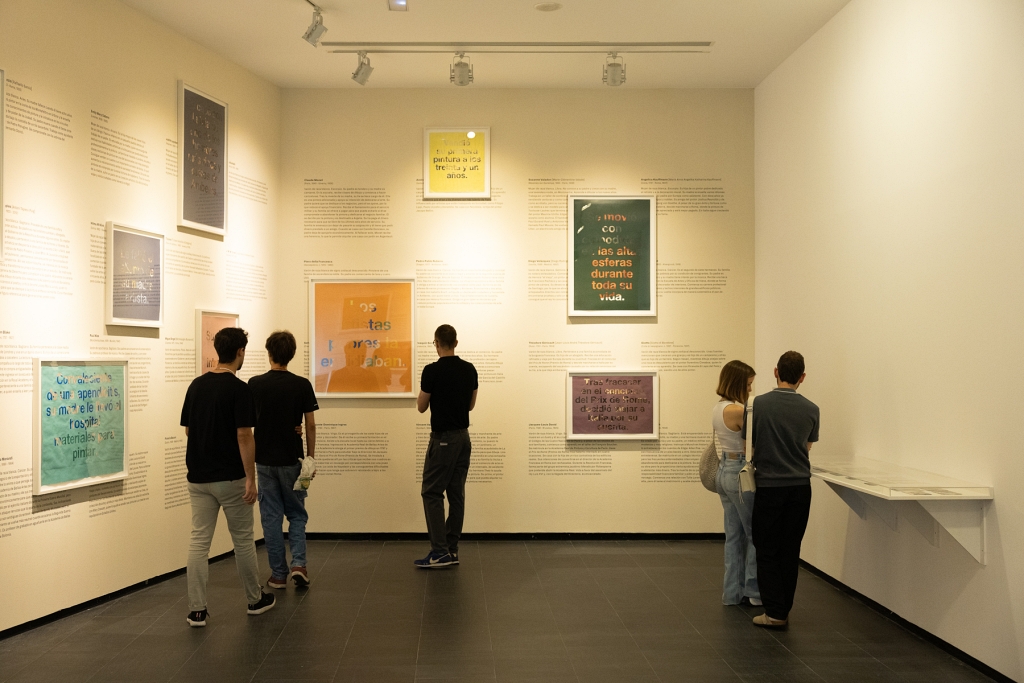- CA2M MUSEUM
- exhibitions
- ADOLFO SCHLOSSER. BÓVEDA
ADOLFO SCHLOSSER. BÓVEDA

Picture: Roberto Ruiz.
“From the succulent stalk of a root, crawling beneath
the sand, a tiny thistle leaf sprouts
every now and then.
A blade of grass sinks its vast network
of roots into the sand.”
Adolfo Schlosser, Stilleben [Still Life], 1987
Adolfo Schlosser (Leitersdof, Austria, 1939 – Madrid, 2004) belongs to a generation of foreign artists who arrived in Spain in the late 1960s, bringing with them new ways of understanding aesthetic codes from Central Europe. Born in Austria into a family of potters, he was familiar with artisanal techniques of painting on clay and firing ceramics from an early age. His father’s studio, on the outskirts of the town, was close to a forest, and this close relationship with nature would shape his later work.
Schlosser was educated at the School of Arts and Crafts in Graz, then moved to Vienna to study at the Academy of Fine Arts, where he became interested in literature and music. But, drawn by a desire to travel, he soon dropped out. At just 19, and having already visited several countries, he began working on the Dorkell Many, a cod-fishing boat in Iceland. This four-year experience would decisively impact his later work as he often made references to the Nordic cultural universe and the world of deep-sea fishing in his oeuvre, alluding, in particular, to whales after reading Herman Melville’s novel Moby Dick.
His interest in Spain was piqued after reading Federico García Lorca and Jorge Guillén, and he settled here for good in 1967. He first lived in the capital for a few years, where he encountered the art scene of the day, but then moved to Bustarviejo, a small town in the mountains north of Madrid, where other artist friends such as Mitsuo Miura, María Lara and Marcos Irizarren also lived. Drawn to the formal language of nature and to writing, he turned his surroundings – through his walks in the mountains – into the fundamental building blocks of his entire artistic output. In addition, and together with Eva Lootz, who came with him to Spain, and Juan Navarro Baldeweg and Patricio Bulnes, he founded the experimental magazine Humo (Smoke). His originality and the feeling he imbued into the language of aesthetics – similar to minimalism and Land Art – would make him a prominent figure on the Spanish art scene. In 1991 he was awarded the National Prize for Visual Arts.
Although he never stopped writing radio scripts, texts or poems – and he continued to be interested in music – sculpture was the main means of expression through which he developed an original language. While he initially showed a preference for experimenting with plastic, acrylic glass, rope and rubber bands, they would soon be replaced by organic elements taken directly from nature and incorporated directly into his imagination. Stones, sticks, leaves, wood, sand, etc... as well as mathematics and abstraction relating to the natural rhythms of the environment, allowed him to create a body of work that reconnected him with his immediate surroundings.
His work – from the first tapestries of the early 1970s with their abstract compositions, via his drawings, sculptures, installations and photography, as well as performances featuring concerts with sculpture-instruments – attests to his evocative capacity for apparent fragility, and is in contrast to the robustness of the large-scale installations he created from the eighties onwards, which centred on the symbol of the spiral. This can be seen in the work entitled Bóveda (Vault), made in 1992, where the verticality of the sliced fir trunks and the three circles of quartz stones surrounding them suggest the ancestral rites of Germanic cultures, which in turn can be linked to the philosophy of Asian symbology. This concentric pattern depicts the circle as one of the most common designs found in nature. Schlosser’s work is a forerunner of some of the interests and trends found in contemporary sculpture: These include the ecological dimension and constant research into organic materials that are worked on only minimally. Similarly, his work goes beyond merely reflecting on the landscape to reflect on experiencing the landscape, which the artist sought to transfer to this exhibition space.
Drawing was another of the artist’s many interests, and his work was often accompanied by preliminary sketches of his meticulously drawn designs. In this case, together with Bóveda, Schlosser made some preliminary sketches that not only explain how the piece was to be installed but also showcase his meticulous and excellent skill at drawing. In fact, paper became one of his favourite materials on which to experiment with Indian ink, wine, graphite and acrylic paint, displaying a whole series of delicate forms alluding to the world of ocean-related creatures, such as flamingos, seagulls and whales, as well as massive drawings depicting a range of different landscapes.
There is no doubt that the quality of the organic materials used allowed him to explore a poetic approach that he himself explained by saying: “I use this material because it already has its own meaning as a reality, even greater than that of the work of art. They are not ‘materials’, but mud, tree, branch... nature, life.”

TRAILS THROUGH THE CA2M MUSEUM
During these months, the exhibitions will be full of objects that we will be able to fly over, contemplate from above or from closer. We propose to wander among them, under their protection, let ourselves be touched and see what happens in this encounter.